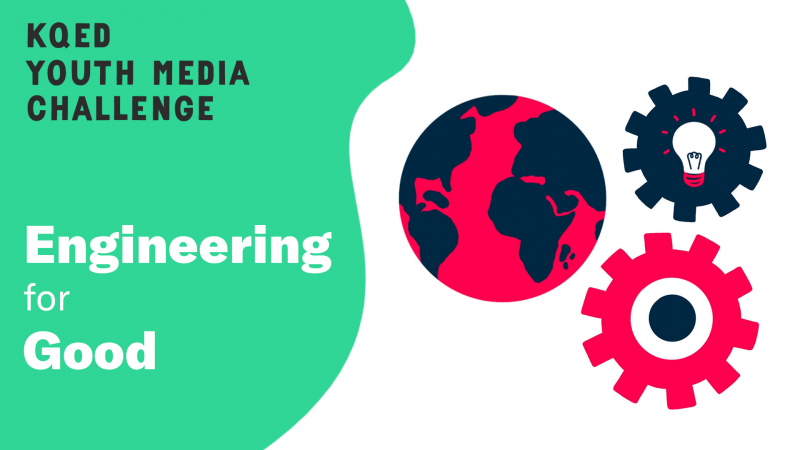Engineering is about more than just science. It’s about communication. Engineers need to be able to report their findings, convey the evolution of their ideas, and persuade others to invest resources into their designs. Engineers take complex and often technical project plans and distill the most important details relevant to a particular audience. Videos or graphics are especially useful ways to communicate in engineering because of the visual nature of their designs. These media formats allow engineers to tell a story without losing the important technical details of a design solution.
The KQED Youth Media Challenge: Engineering for Good invites students to engage in the engineering design process to address a problem that matters to them and communicate their solutions with an authentic audience through visual media.
Hands-on, Project-based Learning
In this project, students get to follow their curiosity to deeply understand, define and solve a challenging real world problem. Ciro Aguilar, a 9th grader at Workman High School, described the process of designing his own solution as exciting and meaningful. “My favorite part of this was doing our own invention and explaining how it’s going to work and how it’s going to help our economy.” Throughout the project, students also collaborate to improve their designs with peer feedback and reflect on their process, reinforcing the content and developing a sense of personal agency in their learning.
“The project can be adjusted to tackle any real world challenge with ease and flexibility.”
Adaptability
“The project can be adjusted to tackle any real world challenge with ease and flexibility,” says Workman High School science teacher, Merek Chang. The curriculum comes with a range of sample NGSS-aligned prompts to help you address fundamental ideas and science concepts while engaging students in the practices of engineering. Lesson plans and the student workbook are Google docs, so you can adapt everything to your learners’ needs. Mr. Chang noted that he “spent little to no time designing curriculum” and instead got to focus on “sequencing and addressing student needs.”
Access and Audience for Every Student
This isn’t a contest–all student submissions are published on KQED’s online showcase! We know that students value the ability to share their unique perspectives with folks beyond their classroom. Ciro said that for him, what set this project apart from ones he’d done in the past was the “chance to show it to the world.”
